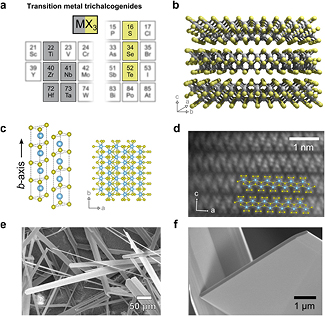The isolation of graphene and transition metal dichalcongenides has opened a veritable world to a great number of layered materials which can be exfoliated, manipulated, and stacked or combined at will. With continued explorations expanding to include other layered materials with unique attributes, it is becoming clear that no one material will fill all the post-silicon era requirements. Here we review the properties and applications of layered, quasi-1D transition metal trichalcogenides (TMTCs) as novel materials for next generation electronics and optoelectronics. The TMTCs present a unique chain-like structure which gives the materials their quasi-1D properties such as high anisotropy ratios in conductivity and linear dichroism. The range of band gaps spanned by this class of materials (0.2 eV-2 eV) makes them suitable for a wide variety of applications including field-effect transistors, infrared, visible and ultraviolet photodetectors, and unique applications related to their anisotropic properties which opens another degree of freedom in the development of next generation electronics. In this review we survey the historical development of these remarkable materials with an emphasis on the recent activity generated by the isolation and characterization of atomically thin titanium trisulfide (TiS3).

The isolation of graphene and transition metal dichalcongenides has opened a veritable world to a great number of layered materials which can be exfoliated, manipulated, and stacked or combined at will. With continued explorations expanding to include other layered materials with unique attributes, it is becoming clear that no one material will fill all the post-silicon era requirements. Here we review the properties and applications of layered, quasi-1D transition metal trichalcogenides (TMTCs) as novel materials for next generation electronics and optoelectronics. The TMTCs present a unique chain-like structure which gives the materials their quasi-1D properties such as high anisotropy ratios in conductivity and linear dichroism. The range of band gaps spanned by this class of materials (0.2 eV-2 eV) makes them suitable for a wide variety of applications including field-effect transistors, infrared, visible and ultraviolet photodetectors, and unique applications related to their anisotropic properties which opens another degree of freedom in the development of next generation electronics. In this review we survey the historical development of these remarkable materials with an emphasis on the recent activity generated by the isolation and characterization of atomically thin titanium trisulfide (TiS3).
